Recombinant Human AKR1C2 protein(Met1-Tyr323), His-tagged
| Cat.No. : | AKR1C2-456H |
| Product Overview : | Recombinant Human AKR1C2 (P52895-1) (Met1-Tyr323) was expressed in E. coli with a polyhistidine tag at the N-terminus. |
- Specification
- Gene Information
- Related Products
- Case Study
- Application
- Download
| Species : | Human |
| Source : | E.coli |
| Tag : | His |
| Protein Length : | 1-323 a.a. |
| Form : | Lyophilized from sterile PBS, pH 7.4. Normally 5 % - 8 % trehalose, mannitol and 0.01% Tween80 are added as protectants before lyophilization. |
| Molecular Mass : | The recombinant human AKR1C2 consists of 338 amino acids and predicts a molecular mass of 38.6 KDa. It migrates as an approximately 37 KDa band in SDS-PAGE under reducing conditions. |
| Purity : | > 90 % as determined by SDS-PAGE |
| Storage : | Samples are stable for up to twelve months from date of receipt at -20°C to -80°C. Store it under sterile conditions at -20°C to -80°C. It is recommended that the protein be aliquoted for optimal storage. Avoid repeated freeze-thaw cycles. |
| Reconstitution : | It is recommended that sterile water be added to the vial to prepare a stock solution of 0.2 ug/ul. Centrifuge the vial at 4°C before opening to recover the entire contents. |
| Gene Name | AKR1C2 aldo-keto reductase family 1, member C2 (dihydrodiol dehydrogenase 2; bile acid binding protein; 3-alpha hydroxysteroid dehydrogenase, type III) [ Homo sapiens ] |
| Official Symbol | AKR1C2 |
| Synonyms | AKR1C2; aldo-keto reductase family 1, member C2 (dihydrodiol dehydrogenase 2; bile acid binding protein; 3-alpha hydroxysteroid dehydrogenase, type III); DDH2; aldo-keto reductase family 1 member C2; BABP; DD; DD2; HAKRD; MCDR2; DD-2; DD/BABP; 3-alpha-HSD3; pseudo-chlordecone reductase; type II dihydrodiol dehydrogenase; chlordecone reductase homolog HAKRD; trans-1,2-dihydrobenzene-1,2-diol dehydrogenase; HBAB; SRXY8; AKR1C-pseudo; FLJ53800; |
| Gene ID | 1646 |
| mRNA Refseq | NM_001135241 |
| Protein Refseq | NP_001128713 |
| MIM | 600450 |
| UniProt ID | P52895 |
| ◆ Recombinant Proteins | ||
| AKR1C2-0452H | Recombinant Human AKR1C2 Protein (Met1-Tyr323 ), Tag Free | +Inquiry |
| AKR1C2-2502H | Recombinant Human AKR1C2 protein, His-SUMO-tagged | +Inquiry |
| AKR1C2-1367HF | Recombinant Full Length Human AKR1C2 Protein, GST-tagged | +Inquiry |
| AKR1C2-18H | Recombinant Human AKR1C2, MYC/DDK-tagged | +Inquiry |
| AKR1C2-412H | Recombinant Human AKR1C2 Protein, GST-tagged | +Inquiry |
| ◆ Cell & Tissue Lysates | ||
| AKR1C2-8930HCL | Recombinant Human AKR1C2 293 Cell Lysate | +Inquiry |
Case 1: Shirato A, et al. Oncol Lett. 2014
Cisplatin is a top anti-tumor drug for bladder cancer, but resistance can be an issue. The study focused on AKR1C2, a protein linked to this resistance, using bladder cancer cells. In cisplatin-resistant cells, AKR1C2 was active, but not in the original cells. Researchers tried blocking AKR1C2 with siRNAs and a specific inhibitor, 5β-cholanic acid, to see if it made cells more sensitive to cisplatin. Suppressing AKR1C2 decreased cell survival after cisplatin treatment. They also measured reactive oxygen species (ROS) levels, which were lower in resistant cells. Knocking down AKR1C2 restored ROS levels, increasing ROS response to cisplatin and menadione, a known oxidative stressor, in resistant cells.
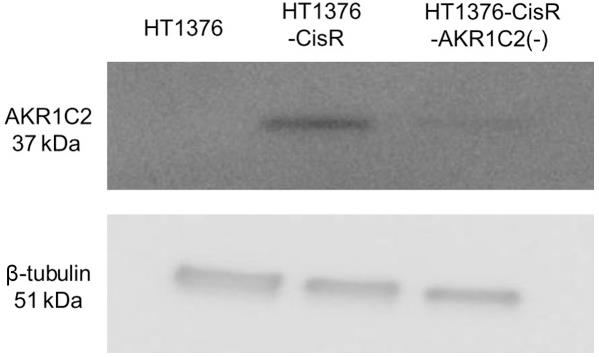
Fig1. AKR1C2 protein expression in HT1376-CisR cells.
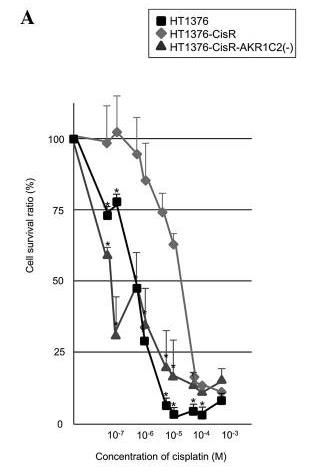
Fig2. Silencing AKR1C2 restored HT1376-CisR cell response to cisplatin.
Case 2: Rizner TL, et al. Endocrinology. 2003
The AKR1C enzymes in humans can act as either reducers or oxidizers for certain steroid hormones. This means they can change powerful hormones like androgens, estrogens, and progesterone into inactive forms or turn them back to active ones. This ability helps regulate hormone effects in different body areas. Specifically, AKR1C2, found in the prostate, can turn 3alpha-dihydrotestosterone into 5alpha-DHT, but this process is hampered by NADPH levels. Whether 5alpha-DHT is formed depends on the cell's NAD(+):NADPH ratio. In some lab experiments, although AKR1C2 can decrease 5alpha-DHT, it doesn't oxidize well compared to another enzyme, 17beta-HSD, which means 3alpha-diol often gets removed. Even though PC-3 cells have some oxidation enzymes, they don't convert 3alpha-diol to 5alpha-DHT. In other experiments, due to high glucuronidation, AKR1C2 doesn't significantly impact androgen processing. High levels of AKR1C2 are found in prostate cancer cells compared to normal ones.
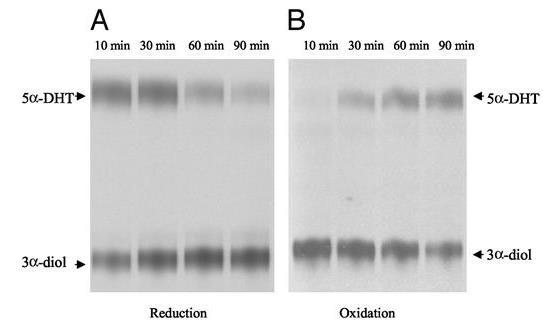
Fig1. NADPH-dependent reduction of [14C]5α-DHT and NAD+-dependent oxidation of [3H]3α-diol by recombinant AKR1C2.
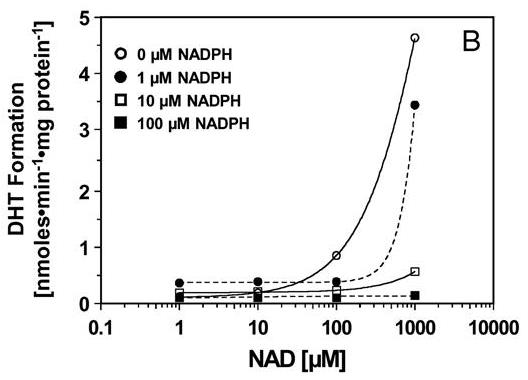
Fig2. NAD+-dependent oxidation of 40 μm [3H]3α-diol (B) catalyzed by recombinant AKR1C2.
AKR1C2 is an enzyme part of the human aldehyde-ketone reductase family, mainly converting aldehydes and ketones into alcohols. This enzyme plays critical roles in hormone metabolism and drug processing. It's also linked to diseases like cancer and allergies. Changes in AKR1C2 activity can impact cell growth and hormone balances, making it crucial for medical research, especially as its varying expression in cancers such as gastric cancer has gained attention. Because it influences cell signaling paths and hormone levels, AKR1C2 is seen as valuable in exploring medical therapies.
In research and development, recombinant AKR1C2 protein serves as a key tool to delve deeper into its disease-related roles, notably in cancer studies. Scientists adjust its levels in cell lines to see how it impacts drug resistance, paving the way for targeted drugs that interfere with AKR1C2-driven metabolic pathways. Although not all commercial use details might be accessible, the available scientific resources and platforms provide essential support in crafting potential treatments and advancing research.
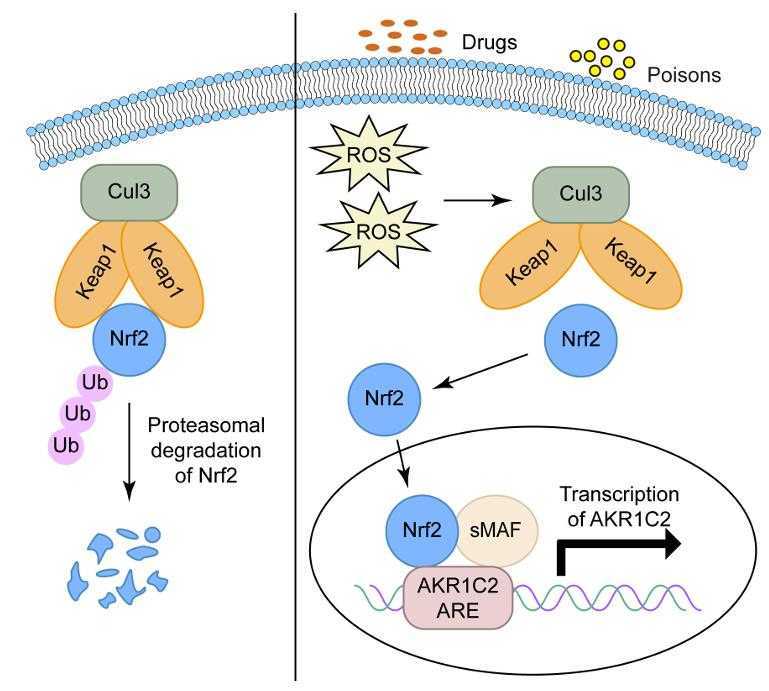
Fig1. Regulation mechanism of Keap1-Nrf2-AKR1C2's ARE. (Zhao Wang, 2023)
Not For Human Consumption!
Inquiry
- Reviews
- Q&As
Ask a Question for All AKR1C2 Products
Required fields are marked with *
My Review for All AKR1C2 Products
Required fields are marked with *
Inquiry Basket


